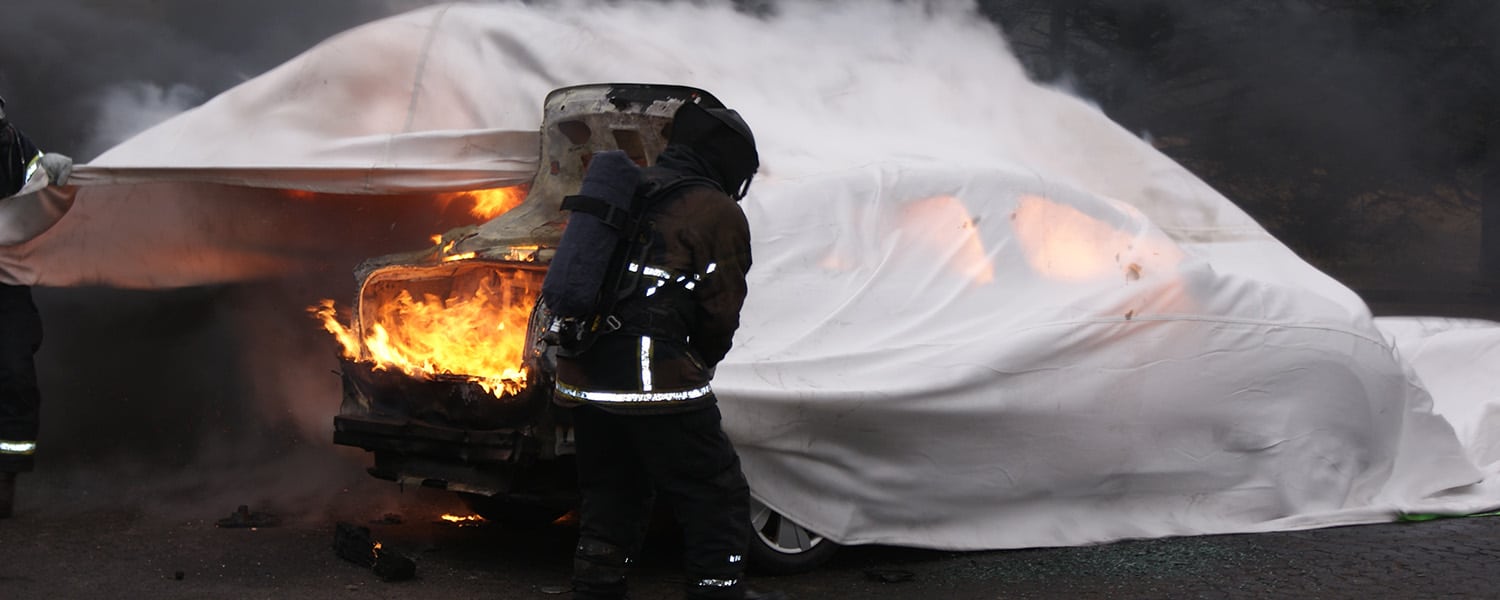Revolutionizing Electric Car Fire Suppression: The Fire Isolator Concept

With the rise of electric vehicles, the demand for effective safety measures has become more crucial than ever. One critical area of concern is the potential for battery fires in EVs, a challenge that has prompted the development of innovative electric car fire suppression technologies. The Fire Isolator concept represents a breakthrough in addressing this challenge, offering a unique solution to control and extinguish electric vehicle fires effectively. When full extinguishment is extremely hard, the goal should be to minimize the collateral damages. This is what Fire Isolator does.
Significance of Electric car fire suppression
Electric vehicle fires are rare but can be particularly hazardous due to the high energy density of lithium-ion batteries. Unlike traditional vehicle fires, EV battery fires are prone to reigniting even after being seemingly extinguished. We have witnessed several EVs reigniting, that had already been put under water. This makes it imperative to have robust EV fire suppression systems in place that are capable of containing and neutralizing these fires.
Understanding Electric Vehicle Fires
To appreciate the importance of solutions like Fire Isolator, it’s crucial to understand the dynamics of EV fires. The complexity of EV fires comes from their unique causes and the difficulty in suppression, making electric car fire suppression systems essential, but at the same time hard to come by. We see many companies out there promising to extinguish an electric car fire, even claiming to be able to stop a thermal runaway. Be careful when that is promised. There is no silver bullet here.
Causes of Fires in Electric Vehicles
The primary cause of fires in electric vehicles is thermal runaway—a phenomenon where a battery cell overheats, leading to a chain reaction of igniting neighboring cells. This can be triggered by physical damage, manufacturing defects, or overcharging. Once a fire starts in an EV, it often rapidly escalates, making early intervention with an electric car fire suppression system essential.
The Fire Isolator Concept & Electric Car Fire Suppression
Fire Isolator is a pioneering EV fire suppression system specifically designed for electric vehicles. We combine methods/equipment and fire suppression technologies that, once combined, give you the best chance of containing an EV fire.
Components of the Fire Isolator System
The Fire Isolator system is built around three core components:
- High Temperature-Resistant Fire Blanket (ISO13501-1 A1 certified): Encases the vehicle to contain the flames, provides the confined space that the aerosols need to be effective, and prevents oxygen from fueling the fire in the car. Note that taking away the oxygen is not stopping the thermal runaway in the battery. That fire fuels itself and cannot be stopped by the blanket alone.
- Potassium Aerosol Units: Deploy potassium aerosol units that suppress the chemical chain reactions in the battery that drive the fire.
- Water Mist: Adds a layer of cooling and fire suppression, reducing temperatures and preventing reignition.

Working Mechanism – Electric Car Fire Suppression
Fire Isolator operates as a comprehensive EV fire suppression system that needs to be deployed swiftly during an EV fire incident, combining its components in a multi-pronged approach to suppress and contain the fire. Note that, although speed is critical, the people deploying it, must be wearing PPE and BA and need to be trained.
High Temperature-Resistant Fire Blanket
The high-temperature-resistant fire blanket (we have 3 types, with the FI-BL0906 blanket the most-sold EV fire blanket globally) is the first line of defense in electric car fire suppression. This blanket, made from a high percentage Silica, is designed to withstand extreme heat while preventing oxygen from feeding the flames. By wrapping the vehicle in this blanket, the fire’s intensity is immediately reduced, providing precious time to suppress the fire.
Potassium Aerosol Units
Potassium aerosol units release a fine mist (particles) of potassium nitrate aerosol that interrupts the fire’s chemical reactions at a molecular level. This technology is highly effective in electric car fire suppression without leaving residue, making it ideal for use in enclosed spaces like EV battery compartments.
Water Mist
The final component is a water mist system. This provides a cooling effect by absorbing heat from the fire. The mist helps bring the temperature of the batteries down, further reducing the risk of thermal runaway and reignition. As part of an electric car fire suppression strategy, water mist is crucial in ensuring the fire is fully controlled. Watermist also makes the blanket gastight, and by that minimizes the toxic vapor coming off the car/blanket.

Benefits and Future Implications
The Fire Isolator concept offers several clear benefits for electric car fire suppression:
- Enhanced Safety: Combining multiple suppression methods significantly reduces the risks posed by EV fires.
- Minimal Environmental Impact: The potassium nitrate aerosols and water mist leave no harmful residues, making the solution environmentally friendly.
- Future-proofing: As electric vehicles continue to evolve, the modular design of Fire Isolator ensures it can adapt to future electric car fire suppression needs.
In conclusion, the Fire Isolator concept is a game-changer in EV fire suppression. As the world transitions towards a greener future, innovations like this are crucial in ensuring the safe adoption of electric mobility.

